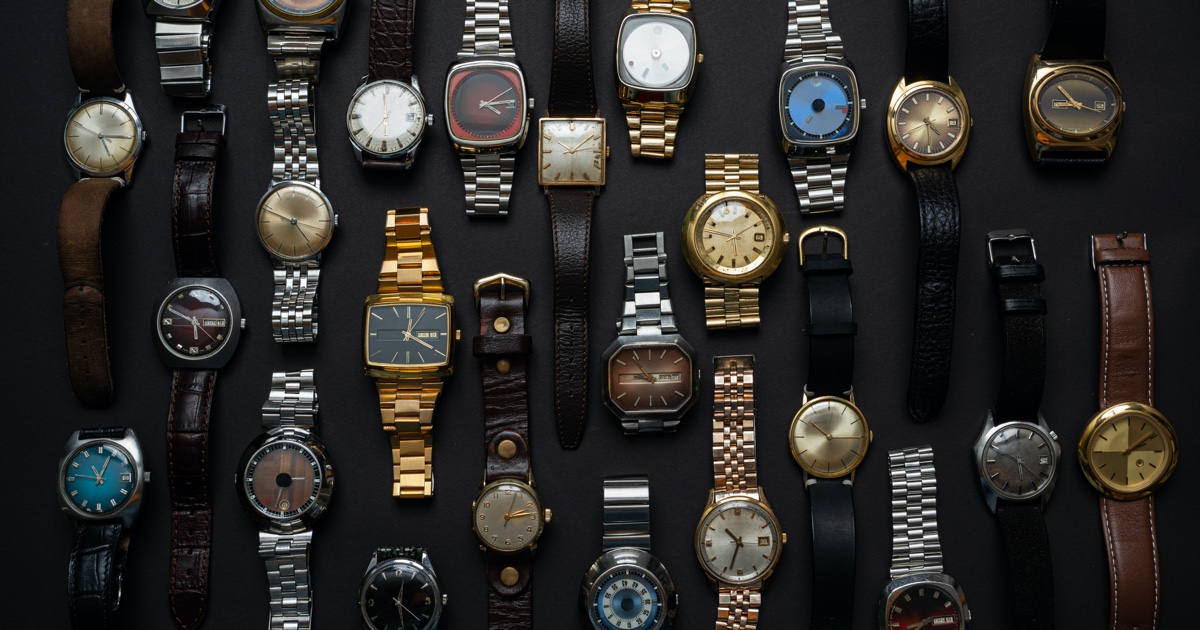The Fascinating History of the Watch: From Ancient Timekeeping to Modern Innovation

The watch, a masterpiece of engineering and a demonstration of human potential has history that can be traced back thousands years. Watches have evolved from primitive tools of timekeeping to luxurious pieces that not just tell the correct timing, but also act as symbols of pride and fashion. The resulting tapestry of the history of timekeeping — from its origins, to how the watch was invented in 16th-century Europe, through some crucial evolutions across eras all stage of mankind’s recorded story.
Ancient Timekeeping Devices
In ancient civilizations, humans utilized natural phenomena as a way of measuring time. They included sundials and water clocks.
Ancient Egypt, circa 1500 BCE – The earliest known sundials to date. A sundial is a flat plate with hours, and the gnomon (a vertical rod) casts a shadow on this plate. Putting the mechanics of the sundial aside, its shadow tells what time it is.
Water Clocks: Known as clepsydra, water clock was developed by Egyptians and later improved upon the Greeks and Chinese. These early contraptions did not actually move but measured time by the flow of water from one vessel to another, providing a more reliable methodical system than metering out hours with sundials that were at the mercy of sunlight.
Candle Clocks Candle clocks were used in the Middle Ages and measured time by how fast a candle would burn. These were inscribed with measurements for time and worked as an extremely useful hourglass.
Mechanical Clock Born
Then in the 13th century came a big leap forward with mechanical clocks. The gears, weights of these clocks were more accurate than previous methodologies. The first analog clock dates back to the monastery in medieval Europe, and was used to announce an hour of prayer.
- Salisbury Cathedral Clock (1386): Located at the Salisbury Cathedral in Wiltshire, England, this is one of the oldest remaining mechanical clocks. Not just that, it was also a stroke of hours and indeed an amazing example with technicality around the times.
- The Tower Clock — By the end of Medieval times, tower clocks were common displays showing the time to town folks in general communal use taking over private applications.
The Invention of the Watch
The first portable timekeeping device, the mechanical watch came into existence in the 15th century as a successor of large clocks.
First Pocket Watches (16th Century): The first watches fitted into the pockets came only when renaissance of Europe was at its peak. These were large and bulky shaped like small watches, they used to be the device of rich people. The early watches were only accurate to a few of hours.
Peter Henlein (16th Century): Peter Henlein, a German locksmith is often accredited with manufacturing the first official watch in 1510. He invented the first spring-powered clock, followed by a smaller portable timepieces he called Nuremberg Eggs. This innovation set the stage for what would become watchmaking in future.
Breakthroughs in Technology: Watches could be manually wound since the late 15th century with the invention of main spring. This enabled devices to shrink in size and allowed for higher precision.

The Golden Age of Watchmaking
It was during the 17th and 18th centuries that watchmaking experienced what’s been called The Golden Age of this new craft, with a variety types being employed for both design changes as well as (ongoing efforts at increased) accuracy.
The Balance Spring: Famed inventor Christiaan Huygens introduced the balance spring (or hairspring) in watches of the 17th century, which greatly increased accuracy. This advancement allowed timepieces to keep a more consistent time, thus minimizing the errors away from accurate time.
The Swiss began to come alive, as the leaders of watchmaking started for this time. Soon, Geneva became a hub of master watchmakers pioneering intricate and luxurious timepieces. This then was further rooted in the 1824 creation of Geneva Watchmaking School (and we all know that Swiss watches are handcrafted, mostly)
From here a complications race began… Watchmakers started to add more functionalities including calendars, moon phases and chronographs etc. They were technical and showed off the watchmakers skills, which appealed to a wealthier clientele.
Industrial Revolution & Mass Production
The Industrial Revolution arrived with the 19th century, plenty to transform watchmaking.
Mass Production: Machinery was introduced, allowing for the mass production of watches. Soon after, in the United States, companies like Elgin Watch Company and Waltham Watch Company were using assembly line techniques to make watches more efficiently with a much lower cost.
Interchangeable Parts: A massive upswing (or within this context down) in mass-production was when parts started to be standardized, cars could only truly be produced by one company because every car they made would need repairs at some point and non-standardized meaning the easiest way of producing them for much more cheaply than current prices(Process Engineering). This helped for easier servicing and also lowered production costs.
The Quartz Revolution: The development of quartz for use in watches began a new era in the history of timekeeping. The only true timepieces were nowadays often called quartz watches, which did absent with the winding system.Post World_war II, began to be used any battery operated oscillator that increased in accuracy. This invention disrupted the age-old market for mechanical watches and eventually resulted in a decrease of mechanical watch production.
The Rise of Digital Watches

Soon, innovation took control and the digital age came into being with those myriad number of watches catered by technology.
First Ever Digital Watch The Pulsar, made by Hamilton Watch Company in 1970 was the first of a kind digital watch available for purchase. With a built in LED display, it changed how one read the hour and was targeted towards an age group of younger individuals who were interested in new technology.
Late 1970s – LCD Technology: Liquid crystal display (LCD) technology delivered digital watches with longer battery life and clearer displays. Casio was one of the brands that made a name for itself by offering ground-breaking digital watches.
Smartwatches: This has become the era of smart watches, where tradition is united with technology. Apple Watch, Samsung Galaxy and other wearable smartwatches offer more than just time keeping as they can also be activity trackers (Step count), notifications, health monitors.
A Fusion Tradition And Modernity In The Watchmaking World
Today, the industry is still healthy and continues to blend its traditional roots with forward-thinking methods.
Luxury Mechanical Watches: A digital renaissance may be in full swing, but the demand for luxury mechanical watches is stronger than ever before. They say for example in regards to the three brands in, Rolex watches Patek Philippe, Audemars Piguet despite everything deliver excellent timepieces that reflect conventional workmanship.
Smartwatch Innovations: Smartwatches are becoming more popular than ever before and is full of new ideas like heart rate monitoring, GPS tracking system, an array of watch faces etc. They are for the person who wants both functionality and a little stylishness.
Eco-Friendly: As consumer environmentalism has risen, watch brands are moving to greener practices. That involves sustainable materials, responsible sourcing and fair labor practices.

Conclusion
The watch is a reflection of the history — and evolution — of man. Timekeeping has come a long way from ancient sundials to our current smartwatch era. Gone are the days when a watch was just a timekeeper; now it is an expression of individual style, as well as being testimony to mechanical prowess and technology. In the grand perspective, each element — from bejeweled dials of past centuries to quartz pieces introduced in 1969 and connected smartwatches developed this decade— plays a vital role for people who simply love watches. And moving forward there is no doubt that our favorite timepiece carriers on your wrist will survive coexist with new high-technology as an irreplaceable affectionate feature living together well into the future!
The history of a watch we know today is vast and captivating from its complex roots to todays industrialized timekeeping. It could be a high-end mechanical timepiece, or something more essential in the form of a smartwatch: watches are one category where we can all agree it still makes sense to weigh each option and decide what’s best for you.
check our other Blogs/ Articles.







